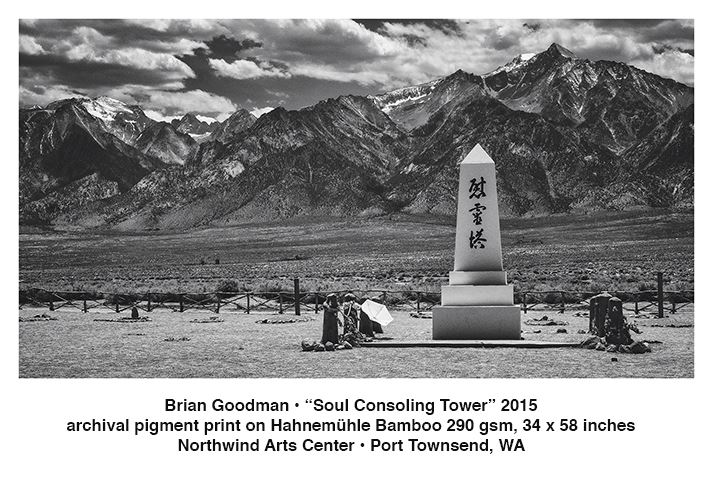
Forty years in the making, “Manzanar: Their Footsteps Remain,” is photographer Brian Goodman’s exhibition and accompanying book of the same name. Featured at Northwind Arts Center this November, Manzanar is, “a photo essay about the remnants of the incarceration of our neighbors,” says Executive Director Michael D’Alessandro. The images of Manzanar transport us from the lush, salty shores of our Olympic Peninsula experience, to the parched, cracked earth of the Owens Valley in California, and to a time of xenophobia and fear.
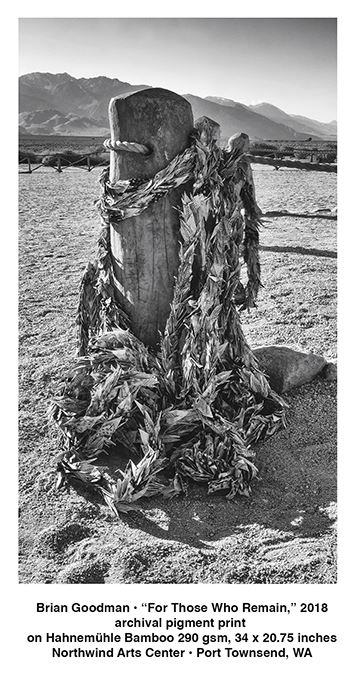 In 1942, our neighbors in Quilcene, Bainbridge Island, Seattle, and elsewhere—120,000 adults and children of Japanese ancestry—were forced to leave their homes and take only what they could carry by bus. Their destination: hastily erected camps dotting the mountain west’s most remote landscapes. Manzanar was one of those camps, and Goodman’s photography lays this story bare.
In 1942, our neighbors in Quilcene, Bainbridge Island, Seattle, and elsewhere—120,000 adults and children of Japanese ancestry—were forced to leave their homes and take only what they could carry by bus. Their destination: hastily erected camps dotting the mountain west’s most remote landscapes. Manzanar was one of those camps, and Goodman’s photography lays this story bare.
“As a child of ten, I remember soldiers with rifles, barbed wire fences, and observation towers with lights in 1943 and 1944,” said Michael Adams, who recalls visiting Manzanar with his father, Ansel Adams. Adams, like Goodman, was called to document Manzanar through photography and his images were influential to Goodman’s work.
Photography is often about the arresting of time, and Goodman uses his camera to full advantage. Each black and white image begs the question, “Was this 75 years ago, or is this now?” In his work it is both. By toying with our perceptions of time and the surreal atrocities of recent history, Goodman uses the contrast of light moving across a broken object, a shadow arcing across a flat plane, and allows time to slow to a stop and stare us in the face.
Goodman remarked, “when I captured the first images at Manzanar over 40 years ago, I had no idea what I was photographing. Over the years, as I learned more about this place in our country’s history, it kept calling me back. I believe it is an important story that many people have no knowledge of, and it relates directly to some of the issues we are dealing with as a society today. My hope is that this exhibit will make viewers pause and realize how delicate and precious our freedoms are and how easily they can be taken from us.”
A close friend of Goodman’s commented that he was torn when he viewed the images. On one hand, they are striking photographs with exquisite attention to composition. At the same time they are intimate examinations of racist actions taken against an entire community of people, most of whom were native born American citizens. 11,070 people lived at Manzanar over three and a half years. For anyone with a sense of justice, it is hard to reconcile the dueling emotions of appreciating beauty and understanding truth. 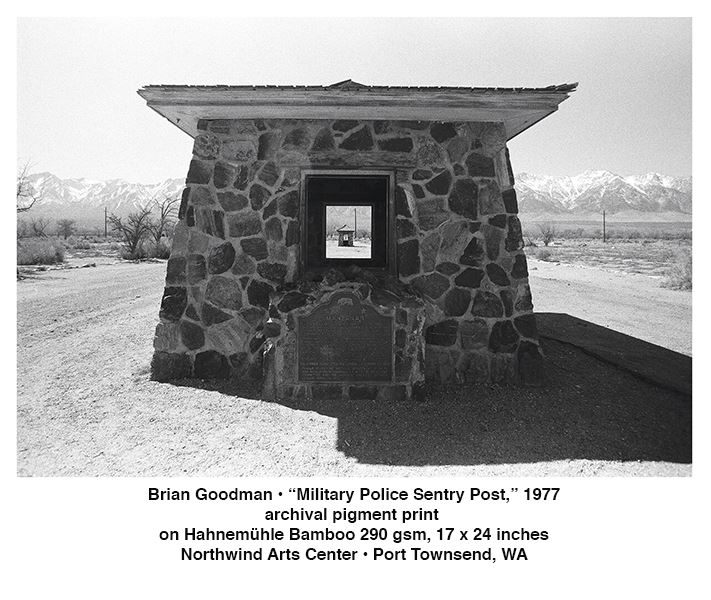
Goodman and his partner, Shira, who helped develop the work and book, were originally planning to tour the exhibition across the United States. COVID-19 emerged just as the book went to print, and the show, scheduled at Northwind for May, was postponed. With life in a holding pattern since then, the next exhibition is currently slated to travel to Peninsula College in Port Angeles in early 2021. The Goodmans still plan to take the exhibition to California, as well as their message. “The most profound and moving stories have been from some of the actual survivors of the camps and hearing their memories of their time of incarceration. November 21st is the 75th anniversary of the closing of the camps and very few incarcerees remain, so it’s extremely important that we never forget what took place and we never let their stories disappear. I hope the photographs instill curiosity and a desire for the viewer to learn more about what’s behind the images.”
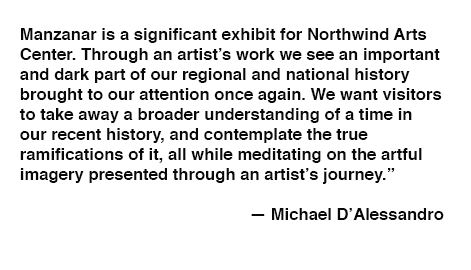
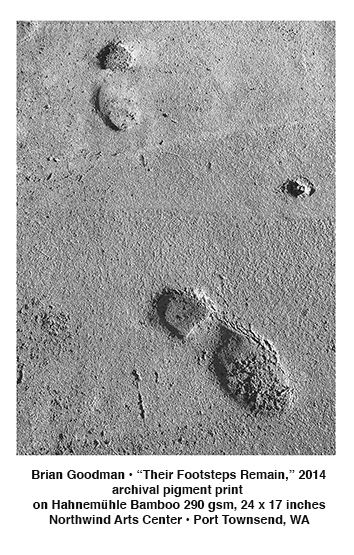 With curiosity in hand, there is no better place to turn than the voices of those who lived the experience. Densho, a non-profit based in Seattle, collects oral history interviews, photographs, newspapers, and other primary sources on the Japanese American experience from immigration through redress, with a strong focus on the World War II mass incarceration. Densho.org is their extensive, online digital archive, and the most comprehensive community-based resource for learning more.
With curiosity in hand, there is no better place to turn than the voices of those who lived the experience. Densho, a non-profit based in Seattle, collects oral history interviews, photographs, newspapers, and other primary sources on the Japanese American experience from immigration through redress, with a strong focus on the World War II mass incarceration. Densho.org is their extensive, online digital archive, and the most comprehensive community-based resource for learning more.
Shelly Leavens
Shelly Leavens is an artist, writer, curator, and the Executive Director of the Jefferson Museum of Art & History. She lives in Port Townsend, Washington with her family.
“Mazanar: Their Footsteps Remain” is on view though November 29 at Northwind Arts Center in Port Townsend, Washington. Northwind Arts Center is open Thursday through Sunday, 12 to 5 P.M., or by appointment. The exhibit’s companion book is available for sale in the gallery. Visit www.northwindarts.org for appointments and more information.